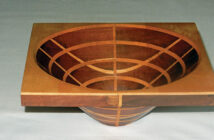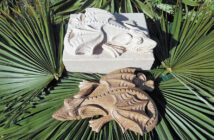Making a Pillar Box:
Keith Mallinson tells us how he made this fun money box.
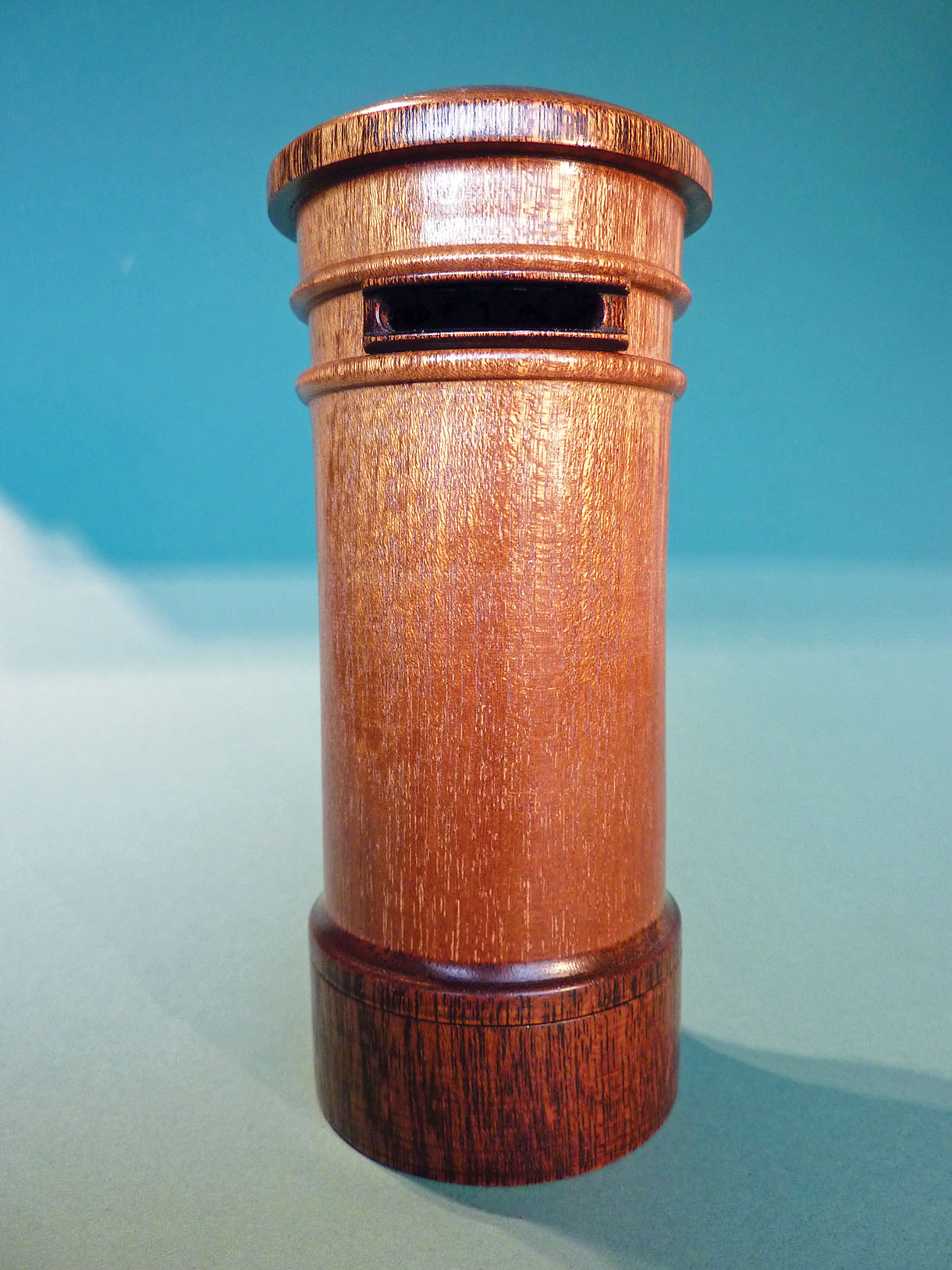
Keith Mallinson tells us how he made this fun money box
The box was turned from a piece of sapele (Entandrophragma spp.), 65 x 65 x 200mm. I didn’t work to measurements; I just wanted the proportions to look right. The measurements quoted were taken after the job was finished.
Making the money box
Hold the square timber between a driving centre and a live centre, turn to a cylinder. Then grip the cylinder in a 4 jaw self-centring chuck, supported at the tailstock with a live centre. Finish the cylinder to 60mm diameter. Now turn the cylinder to 55mm diameter from the tailstock end, up 150mm to form the rim of the domed lid. Face up the end leaving a pip to accommodate the centre. Features of the box can now be marked onto the cylinder, the top of the base and the groove for the letter opening. Allow extra length for the base as it needs to be parted off and turned to make the spigot for the removable base. Cut the groove for the letter opening – 9 x 50mm diameter. Turn the body of the box to the same diameter up to the rim of the domed lid, and down to the base. Form a bead as a feature either side of the letter opening groove and form a radius to blend with the larger base diameter. Finish with abrasive, working through the grades down to 400 grit. Remove dust, apply a dark stain to the lip of the lid and the whole of the base using a small artist’s brush while the work is spinning. Finish using friction polish. Mark up, and part off the base, leaving enough length to turn the spigot for the base cover. Form the spigot on the base – 12 x 48mm diameter, sand smooth. Drill out the body. I used an 8mm pilot drill followed by a 32mm spade bit, ensuring that it is deeper than the coin slot position. Make sure the chuck is tight, drill nice and steady to ensure work stays true in chuck. Clean out and enlarge the drilled hole to improve the finish and ensure the correct depth – 40mm diameter x 105mm deep. Roughly form the dome end as the pillar box body is parted off.
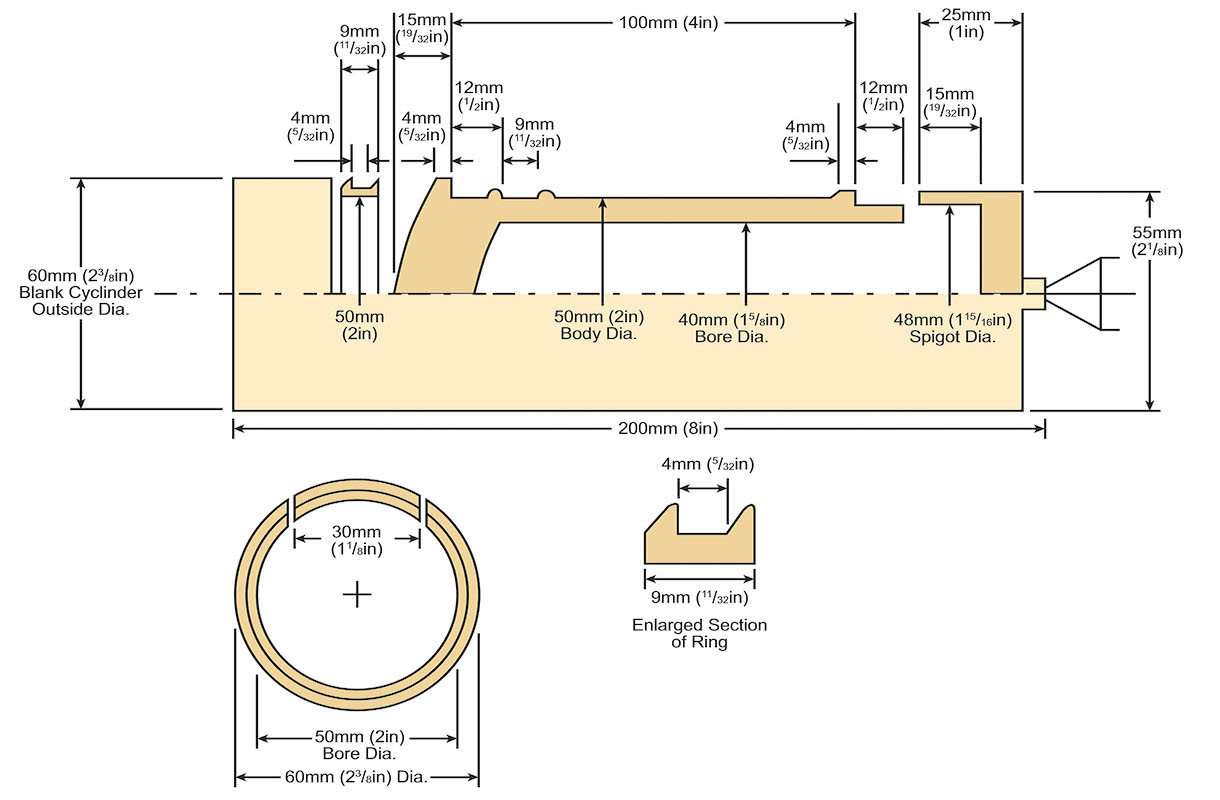
From the material left in the chuck, a ring is formed, from which the mouth of the letter opening is made (see diagram). The bore of the ring must be the same diameter as the groove on the pillar box body – 50mm. Mark the width of the ring – 9mm. Now turn the central groove – 4 x 2.5mm deep – which forms the letter opening. Shape each side of the groove, sand, stain, finish and part off. Next, mark off a segment of the ring – 5–6mm wider than a coin, 10p is 25mm diameter. Cut the segment from the ring, sand each end removing sharp corners, and apply stain and finish. Mount the box body back in the chuck, gripping on the spigot base, to finish turn the dome top. Sand, apply stain and finish with friction polish. Mount the base in the chuck, to remove the centre pip, using thin card under the chuck jaws to preserve the finish. Turn the base slightly convex to ensure that the box sits well when standing. A few concentric circles can be added to smarten up the base. Sand and finish as before. Reverse the base in the chuck and bore out to accommodate the spigot on the upper part of the pillar box body. This should be a snug fit without being over tight.
For safety turn off the power to the lathe for the following operation. To make the opening for coins, I mounted the body of the pillar box back in the lathe, gripping on the base spigot. Ensure that it runs true. The finished segment from the ring can now be glued into position on the body using super glue. Make sure the segment is the right way up. To cut the opening for coins I positioned a pillar drill on the bench alongside my lathe so that its chuck was central above the slot. Using a 4mm drill I drilled a hole at each end of the coin slot, rotating the lathe chuck by hand and holding in the desired position. I then drilled a series of holes as close as possible in between. The slot was then cleaned up by turning the body back and forth while the drill was spinning, to remove waste from the slot. Remove the pillar box body from the lathe. Clean up the coin slot – sandpaper wrapped around a lolly stick – apply stain to colour, and friction polish to seal.
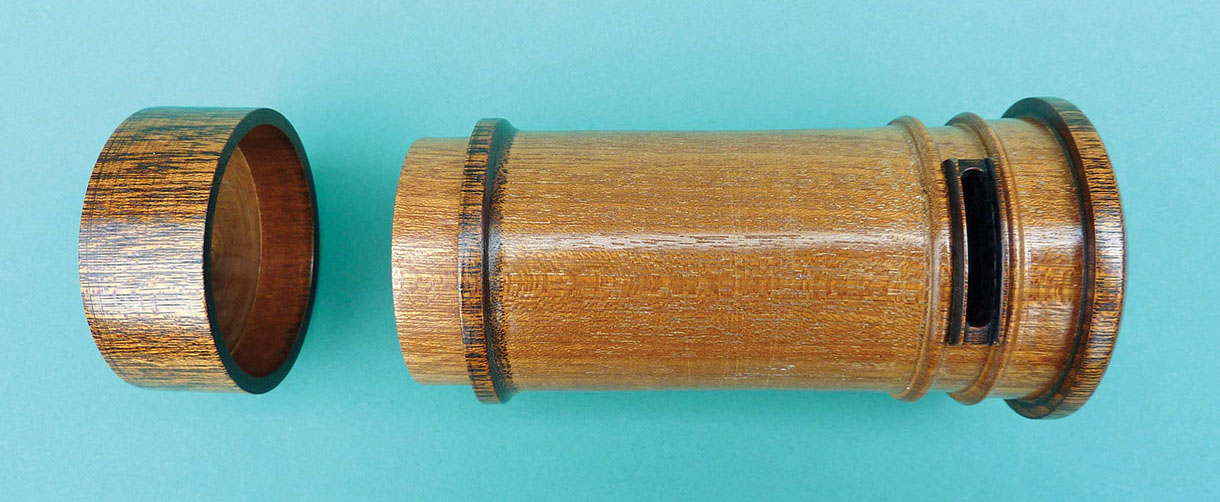
The open pillar box


